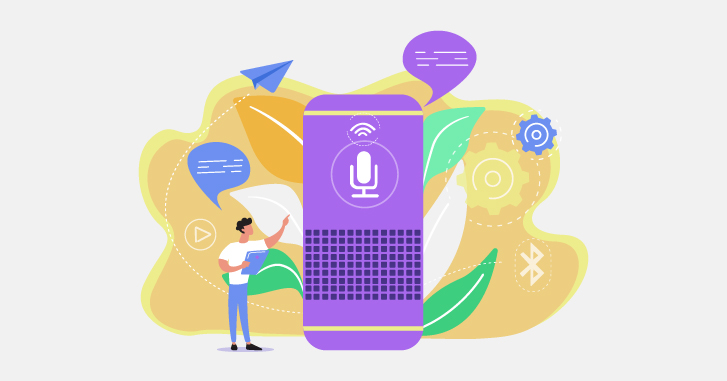What are the Biggest Trends in UX Design for 2021?
Bold fonts? Digital minimalism? Conversational UX? These and more are the trends that seem primed to reshape the UX industry. Find out more.
Picture this: you open a website, it has a nice layout, an easy-to-use screen, and pleasant visuals. Then, you open another website and notice that it is rich in content. But, it is difficult to navigate and has little visual appeal in contrast to the previous site.
if you’d prefer to return to the former website, you are like 80% of consumers on the web. UX design is incredibly important in a world that heavily relies on visual aids to interact.
The equation is pretty straightforward. Consumers want memorable experiences, and companies want to learn how to provide them. Investing in research and UX analysis is the only way to go.
If you want to know what your users want, then you’ve come to the right place.
What are the latest trends in UX Design?
Blooming technology trends have a significant influence over UI/UX designs. Research in artificial intelligence, augmented reality and simulation have completely transformed the game. Leading to users expecting a more immersive and realistic experience.
What is the key to creating a successful user experience? Impactful and intense visuals are no longer enough – Here are the top UX design trends of 2022
1) Minimalism in UI

Contrary to the popular belief in UX design, less really is more.
Digital minimalism is the future of UX design. Consumers won’t accept walls of text and oodles of colors to wade through – even if the content is relevant. Instead, they expect simple pages that load fast and offer a smooth experience.
Your biggest ally is White space or negative space. It improves the accessibility and usability of your website. Moreover, it offers a ‘decluttered’ and convenient user experience.
UX designers should err on the side of caution when it comes to minimalist designs. In the pursuit of creating user-friendly negative space, it is important to steer clear of designs that are dull and unengaging. Understanding the Law of White Space will be beneficial in this regard.
2) Artificial Intelligence For Smarter Personalization

Artificial intelligence has transformed the user experience like no other. According to a recent survey by UserZoom, about 80% of UX executives think AI and UX design are the “future of user experience.”
The biggest benefit of AI is that it delivers a highly personalised user experience. AI can personalise the content that is targeted at user’s search patterns to avoid irrelevant content. This is a tactic that assists websites like Netflix to achieve astronomical success.
Furthermore, AI is used to implement font pairing on UX. Platforms such as Font Joy implement deep learning to pick the best font for the website on their own. It is based on algorithms that suit consumer tastes. It carefully considers the organization's approach to customer engagement.
AI is not the future – it is here!
[cta_blog_inner]
3) Abstract Visualizations

Integrating abstract shapes and gradients into App layout is a neglected aspect of good UX design. They can be applied to images or backgrounds to break up any monotony caused by long walls of text or dull images.
This has ancillary benefits as well for instance making your organization appear creative. It also gives the website a contemporary look and a distinct branding theme. All that and increased traffic to your websites.
You can use abstract visuals to make your website more sleek, elegant, and engaging.
4) 3-D Animation and Figures

3D graphics have recently gained a lot of traction and it only seems to be growing. It requires a high level of skill and creative design sense to incorporate these graphics into web pages and applications. However, the advantages exhibited by their use make them an appealing option.
In other words, 3D graphics are better at grabbing users’ attention. They also tend to make the interface appear more professional. 3D graphics give the application a distinct realistic aura, making it look advanced. The photorealism employed by 3D graphics renders itself very useful. Especially in cases where the pictorial equivalent of the content is inaccessible.
Services like Homes of the Future or the Vinyls E-Commerce App enjoy the use of 3D graphics.
5) Bold Fonts in Web Design

When it comes to designing your interface, features as simple as a bold font can change the entire outlook of your website. Using a bold font opens your webpage to several benefits. Including more attention to your content and control over what your users focus on.
Bold fonts help build a hierarchy within your content on a webpage. Your users are more likely to read words that are bold than those that aren’t. You can strategically use this to deliver a positive first impression.
It’s a proven fact that people generally read words printed in larger fonts first. You can ensure better readability by using a combination of bold fonts on your interface. Moreover, bold fonts are more noticeable in a minimalistic interface. Bold fonts are extremely versatile. They can be used in logos and website headers for impact. Coupled with graphics, they help make the content memorable and the website look more interesting.
When used with the right graphics and features, the right font can do wonders for your content.
6) Dark Mode

Dark mode has been the go-to design choice for centuries now.
As a feature that is growing in popularity globally; dark mode is underrated as a powerful UX design tool. It can make a notable impact on branding, through the elegant and minimalist design. Facebook’s dark mode does this particularly well. This is why it’s dark mode has been very well-received by users.
Snapchat’s dark mode is a popular favorite as Snapchat is most actively used in the later hours of the night. It reduces eye strain when used in the dark. Moreover, it has plenty of benefits in terms of accessibility, usability, and legibility.
Outlook’s dark mode holds striking similarities to Google Chrome’s dark mode. That is in terms of layout, functionality, and mobile design. They both claim to decrease eye strain, increase battery life and provide a more satisfying user experience.
7) Mobile-First Design

What is mobile-first design?
It is the design philosophy that believes in creating UX design from the perspective of a mobile user. It envisions the layout of the application before envisioning the website. The design for bigger screens is considered secondary.
It is an effective and powerful UX design strategy, since around 66.5% of the world currently owns smartphones, and the average user spends 171 minutes on their phone everyday. Hence, it ensures that the maximum number of users find the website accessible and user-friendly across all platforms.
This further allows designers to focus mainly on core content, avoid verbose and long texts. This also encourages designers to focus on styles of delivery such as the use of video content. It is currently the most popular medium of consuming content. It helps websites build their core competencies such as the ease of navigation and visibility – resulting in extremely user-friendly interfaces.
In a world where smartphone browsers now support biometric authentication, mobile-first designers can improve the overall security of their websites. Biometric verification to serve various beneficial purposes.
8) Voice User Interface

Voice user interfaces (VUIs) are growing rapidly in popularity.
It allows users to communicate with an interface through verbal commands. Many examples of these are already pretty common. Such as Siri by Apple, Alexa by Amazon, or several other smart virtual assistants. This feature is prevalent among generations that prefer the hands-free experience. So that they can simultaneously complete other tasks.
The VUI experience allows users to use a system at a faster speed. A study at Stanford concluded that verbally dictating what to write to a device saves time. Which would have been otherwise wasted in typing.
VUIs are quite accessible and intuitive. They cater to people with special needs including visual impairments or physical limitations. VUI offers a unique challenge to developers. Producing technology that does not need to be taught is the next stage to creating intuitive interfaces. VUI is a big step in that direction.
9) Augmented Reality in Websites

AR systems allow users to interact with products by adding an “extra programmed layer”. It is imposed over an actual reality in order to replicate the same experience. This saves users from spending an unnecessary amount of time in retail outlets.
Current and potential uses of augmented reality are exciting prospects. L’Oreal intends to use augmented reality systems to allow for a virtual try-on of their make-up. Puma has launched its first “virtual shoe” which uses QR codes and LQD cell technology to allow users to “wear” their shoes online. Companies like Asos have also launched their first augmented reality systems. Taking the use of UX design software to the next level.
Augmented reality is not only cost-cutting in the long-run, but is also very convenient for users. This ease will entice users to return to the service, increasing traffic to your website. AR also reduces the burden on customer service representatives. As virtual product experiences allow customers to find answers to their questions.
Augmented reality is opening new doors that could not be accessed before. UX designers need to do all they can to take advantage of AR.
10) UX Writing and Communication

Would you rather talk to a lecturing adult or an endearing friend?
Chances are you’d pick the latter. Companies are changing their mode of communication. They are trying their best to seem more approachable and friendly as opposed to formal and rigid. It could be useful to add humor and conversational language to your writing toolbox.
Organizations are now making use of microcopies. Which are minimalistic pieces of texts that intend to offer brief explanations in a friendly tone. For example, Airbnb is an application that makes good use of this throughout its interface. It uses concise, and occasionally humor-laden messages to seem conversational and accessible.
Employing the right UX design strategy can improve conversion rates by up to 400%. Identifying trends is the first step toward making your website more user-friendly. Along with being popular and interactive as well.
So, is UX Design Still in Demand?
If you haven’t yet invested in UX design, chances are you’re not taking full advantage of the opportunity.
In a world where over 4 billion people have some form of access to the internet, UX design has become a necessary skill. Minimalist websites that use abstract designs rely on 3D visuals and video content. Making use of bold font styles holds the most aesthetic appeal for consumers. It is important for growing businesses to employ AI or augmented reality wherever possible. The plan shouldn’t be to implement a few of these trends but to woo your users with a superior, integrated UX design.
User expectations are constantly evolving. If you haven’t yet invested in UX design, chances are you’re missing out on an opportunity.





